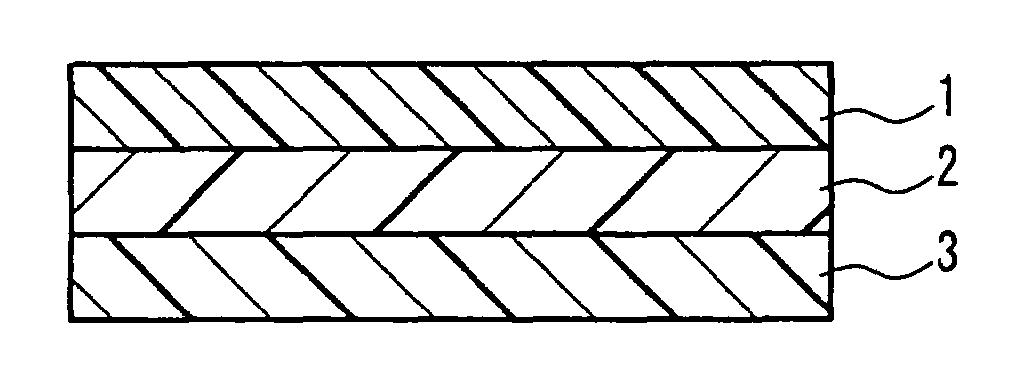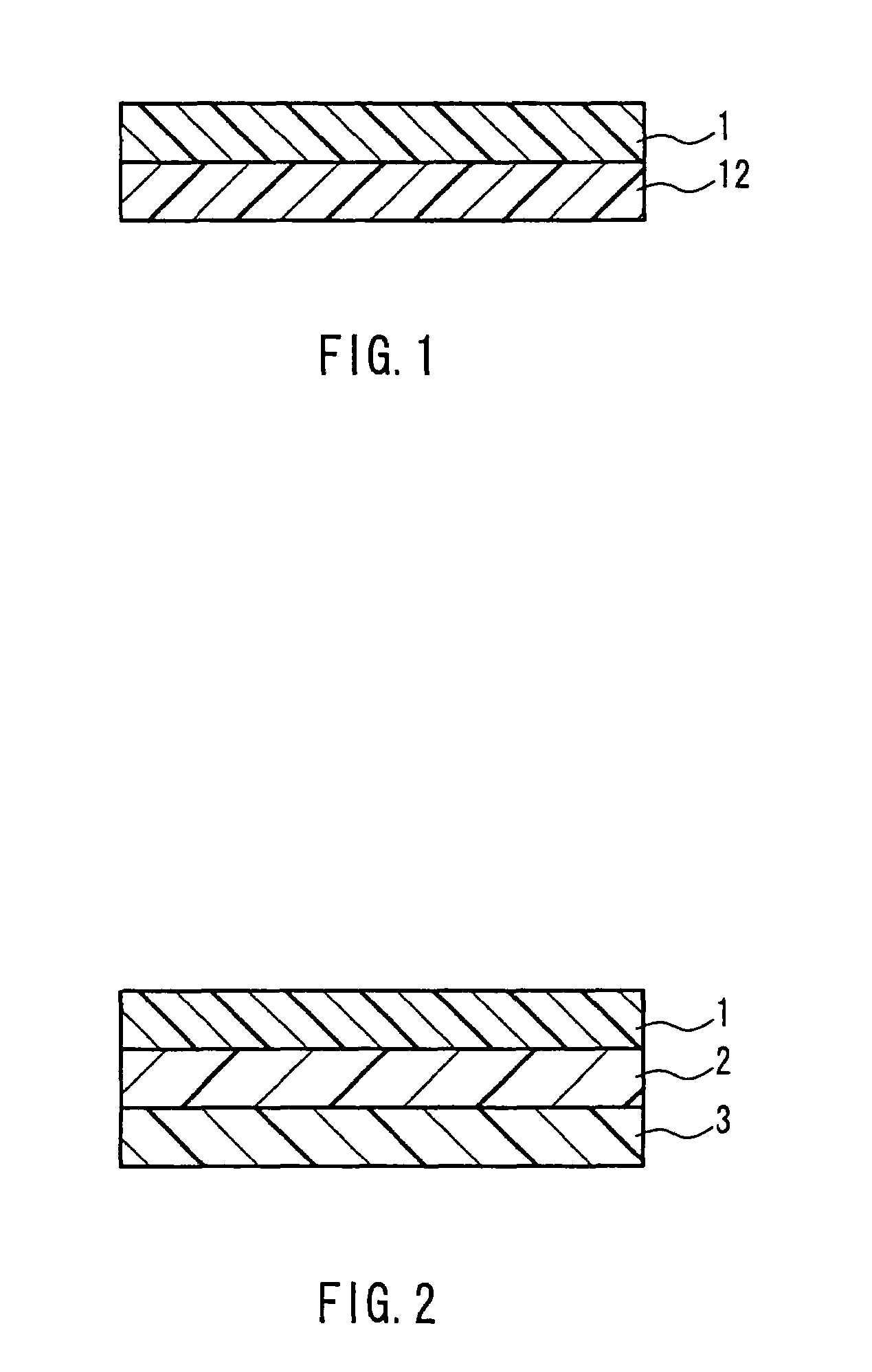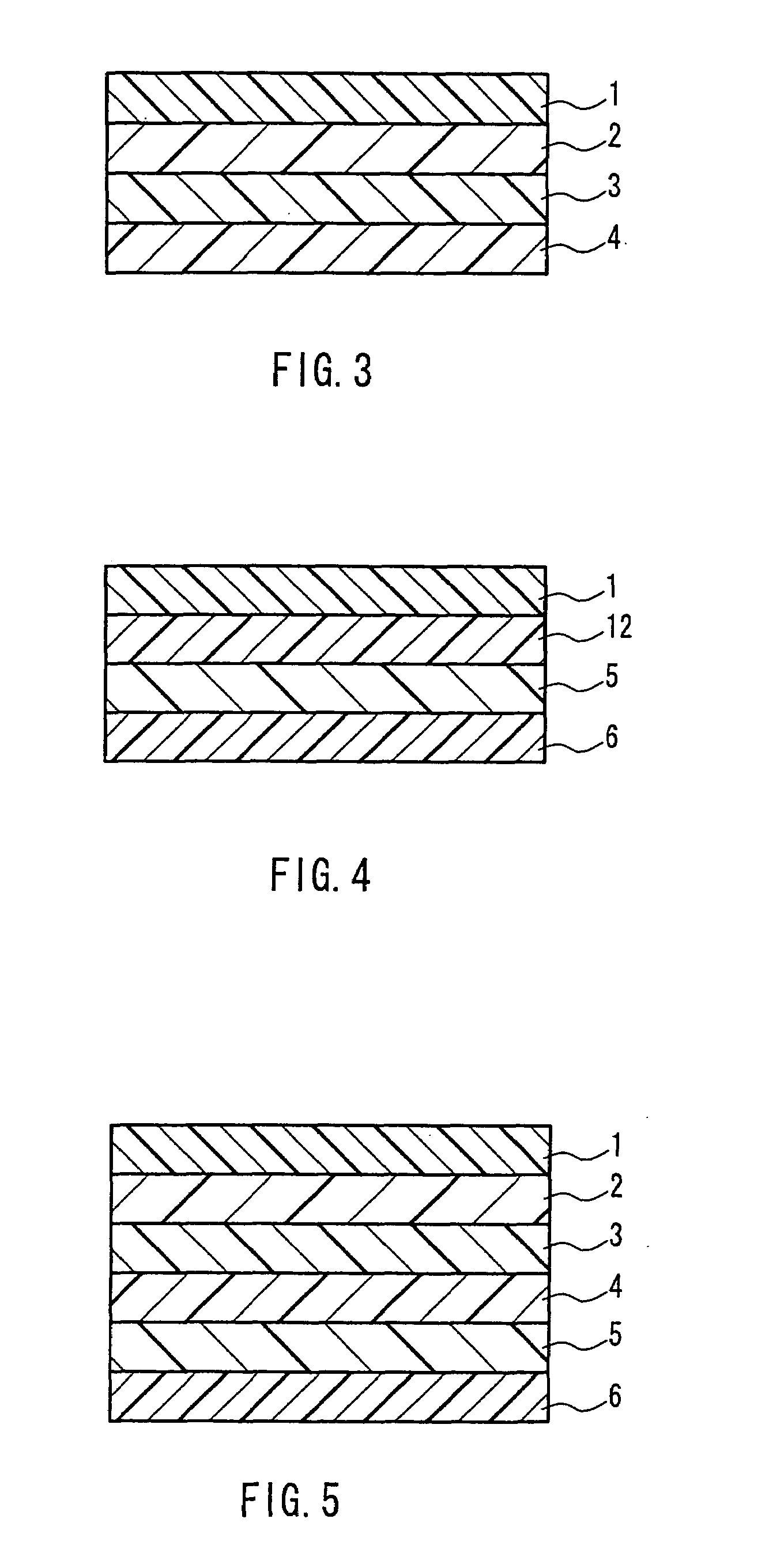Laminate for printing and, printing method and printed matter using the same
a technology of laminate and printing method, applied in the field of printing laminate, can solve the problems of blurred edges, inability to obtain sufficient color density, and impair image sharpness, and achieve the effects of weak affinity, weak affinity, and permeability of dyes
- Summary
- Abstract
- Description
- Claims
- Application Information
AI Technical Summary
Benefits of technology
Problems solved by technology
Method used
Image
Examples
reference example 1
[0072]1000 parts of n-butyl acetate was put in a four-necked flask equipped with a stirrer, a thermometer, an inner gas inlet and a condenser, and a temperature was increased to 100° C. Next, a mixture including: 650 parts of methyl methacrylate; 245 parts of n-butyl methacrylate; 100 parts of 2-hydroxy ethyl methacrylate; 5 parts of methacrylic acid; and 15 parts of t-butyl peroxy-2-ethyl hexanoate was dropped at 110° C. over 4 hours, and even after the dropping, the temperature was kept at 110° C. so as to continue the reaction for 6 hours, whereby vinyl copolymer (a-1) having about a nonvolatile content of 50% was obtained. This vinyl copolymer (a-1) was dried and its SP value was measured. The measurement result was 10.16.
reference examples 2 to 6
[0073]Vinyl copolymers (a-2) to (a-6) were obtained in a similar manner to Reference Example 1 except that the ratio of vinyl monomers was changed as in Table 1. Furthermore, they were dried and their SP values were measured. The measurement results are shown in Table 1.
[0074]
TABLE 1Vinyl monomersa-2a-3a-4a-5a-6styrene100200200methyl methacrylate200500800400ethyl methacrylate200450ethyl acrylate190100n-butyl methacrylate100200300t-butyl methacrylate200n-butyl acrylate195951501902-hydroxy ethyl200methacrylatemethacrylic acid551010S P values9.799.6410.499.029.54
[0075]When the afore-mentioned substances having the SP values of 9.0 or more are used as a dye migration preventive layer, the film thickness preferably is set from 1 μm to 100 μm, inclusive, more preferably from 2 μm to 80 μm, inclusive and still preferably from 3 μm to 60 μm, inclusive. A thickness less than 1 μm leads to insufficient effects for preventing the migration of the dye, and a thickness exceeding 100 μm makes the...
working examples
[0177]The present invention will be described more specifically by way of the following Working Examples. In the following Working Examples, “parts” refer to parts by weight, and “%” refers to percentage by weight.
PUM
| Property | Measurement | Unit |
|---|---|---|
| thickness | aaaaa | aaaaa |
| Tg | aaaaa | aaaaa |
| shrinkage ratio | aaaaa | aaaaa |
Abstract
Description
Claims
Application Information
 Login to View More
Login to View More - R&D
- Intellectual Property
- Life Sciences
- Materials
- Tech Scout
- Unparalleled Data Quality
- Higher Quality Content
- 60% Fewer Hallucinations
Browse by: Latest US Patents, China's latest patents, Technical Efficacy Thesaurus, Application Domain, Technology Topic, Popular Technical Reports.
© 2025 PatSnap. All rights reserved.Legal|Privacy policy|Modern Slavery Act Transparency Statement|Sitemap|About US| Contact US: help@patsnap.com



